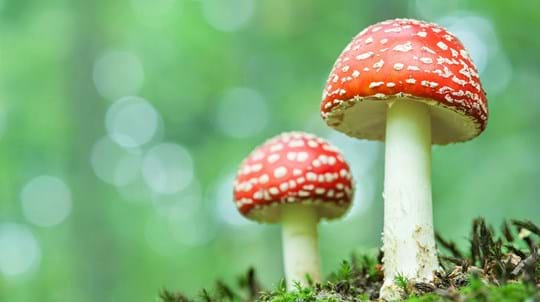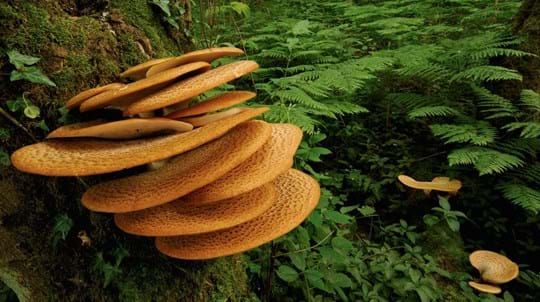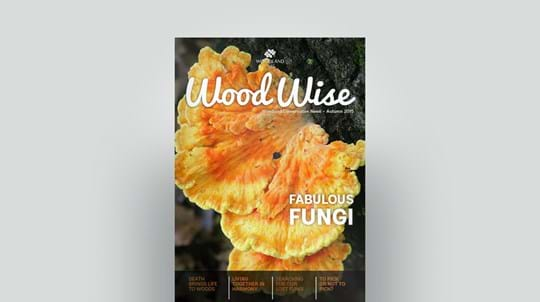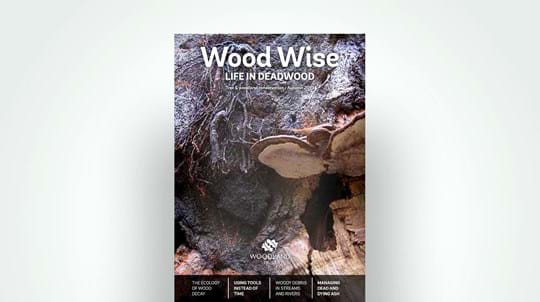Penny bun (Boletus edulis)
Weighty, fat and delicious with a cap like a crusty, well-baked bun. Penny buns, or ceps, are prized for their taste and benefits to woodland, tree and human health.
Common names: penny bun, king bolete, porcini, cep
Scientific name: Boletus edulis
Family: Boletaceae
Fruiting season: summer to autumn
Habitat: broadleaved and coniferous woodland, wood edges and grassy clearings
What does penny bun look like?
A chunky-looking mushroom with a cap that really looks like a well-baked bread roll. It is edible and highly sought after by the food industry and can weigh a kilo or more when mature. Its average height is 25cm.
Cap: the cap looks like a crusty bread roll; it is brown and dimpled with a paler edge, 8–25 cm across.
Gills/spores: underneath the cap, gills are white, with fine pores that age to yellow then turn green and spongy. The spore print is green/brown.
Stipe (stalk): the stem is thick and swollen, pale brown with a white network pattern on the upper part.
Not to be confused with: the similar-looking bitter bolete (Tylopilus felleus) and bay bolete (Imleria badia). It’s not poisonous but it tastes awful and has a slightly darker stem covered with a lighter, net-like mesh. Also, the poisonous Devil’s bolete which has a bright red stem but is very rare.
Value to wildlife
It is a popular food for red squirrels, slugs (including the scarce lemon slug (Malacolimax tenellus), several species of mushroom fly, as well as other insects and their larvae.

Credit: Laurie Campbell / Alamy Stock Photo
Mythology and symbolism
In folklore it is said that the best time to hunt for penny bun and other ceps is when it’s a full moon.
Uses of penny bun
One of the most sought-after wild mushrooms, with a fine flavour and texture. It is highly prized by the food industry, which dries them and uses them as a flavouring for soup. They offer a number of health benefits, including natural antioxidants, minerals and vitamins, and are a rich source of fibre as well as being low in calories and saturated and unsaturated fat.
Each mushroom can weigh as much as a kilo when mature. However, a huge specimen collected on the Isle of Skye weighed in at 3.2kg. The best time to pick penny bun fungi is a few days after summer rain. Unfortunately, if you leave it longer than that the mushrooms are likely to be maggoty, though some people don’t mind just removing the maggots before cooking the ceps.
They are called porcini (little pigs) in Italy, cep (trunk, because of the fat stem) in France and Steinpilz (stone mushroom) in Germany
Keep exploring

Foraging in October: which wild mushrooms can you eat?
Helen Keating • 29 Oct 2018
Explore the world of foraging with these top wild fungi picking and cooking tips. Here are five edible fungi that are easy to identify.
Start identifying
Visiting woods
Responsible foraging guidelines
Gather wild food without harming woods or wildlife. Follow our guidelines.

Trees woods and wildlife
Fungi and lichens
A dazzling array of shapes, sizes and colours. Find out about fungi and lichens, from ancient taboos to magic and medicine.

Blog
Types of mushroom in the UK: common identification guide
Helen Keating • 31 Aug 2017

Blog
Bracket fungi identification: 10 common UK species for beginners
Amy Lewis • 21 Oct 2021

Blog
Poisonous mushrooms: 8 most dangerous UK mushrooms
Hanako Shimada • 19 Feb 2025

Trees woods and wildlife
Mosses
Ancient and damp, mosses are part of a group of plants known as bryophytes. There are over 1,000 in the UK, and some have global significance.

Trees woods and wildlife
Ferns
Lush, ancient and primitive. Find out more about the UK's shade-tolerant woodland ferns.

Journal
Wood Wise – fabulous fungi
PDF (1.58 MB)

Journal
Wood Wise – life in deadwood
PDF (4.01 MB)





